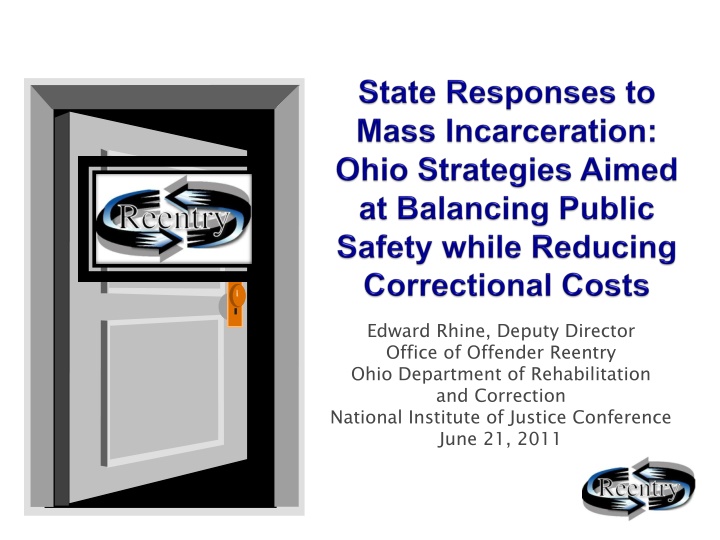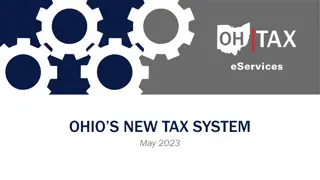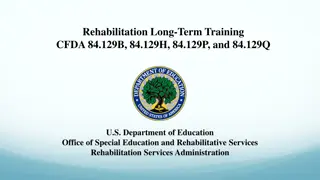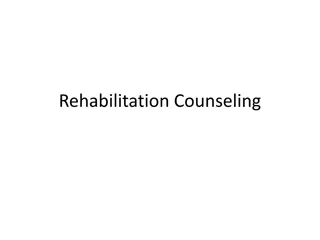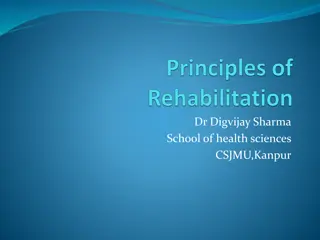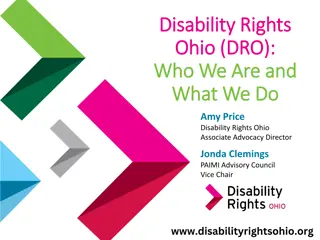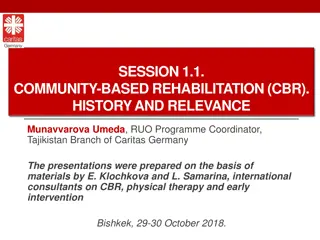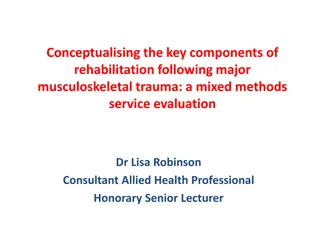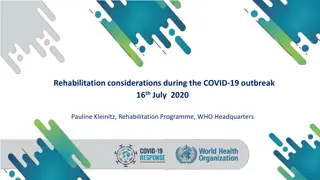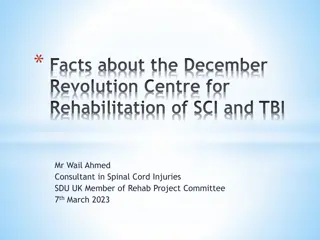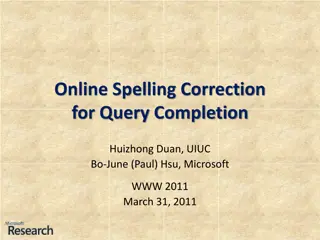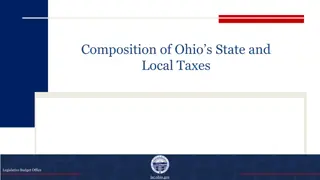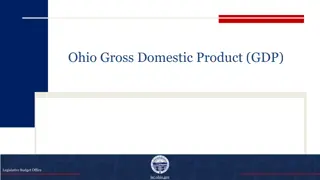Ohio Department of Rehabilitation and Correction: Challenges and Strategies
Recent trends show a complex landscape of prison population growth and budgetary constraints in Ohio. With the prison system operating over capacity and facing fiscal challenges, the state is exploring responses and strategies to manage offender reentry, community sanctions programs, and budgetary realities effectively. The Deputy Director, Edward Rhine, highlights the need for state-by-state variations in correctional practices to address the pressing issues.
Download Presentation

Please find below an Image/Link to download the presentation.
The content on the website is provided AS IS for your information and personal use only. It may not be sold, licensed, or shared on other websites without obtaining consent from the author.If you encounter any issues during the download, it is possible that the publisher has removed the file from their server.
You are allowed to download the files provided on this website for personal or commercial use, subject to the condition that they are used lawfully. All files are the property of their respective owners.
The content on the website is provided AS IS for your information and personal use only. It may not be sold, licensed, or shared on other websites without obtaining consent from the author.
E N D
Presentation Transcript
Edward Rhine, Deputy Director Office of Offender Reentry Ohio Department of Rehabilitation and Correction National Institute of Justice Conference June 21, 2011
Recent Trends Relative to Prison Population Growth Recent Indicators of Declining Growth Do Not Portend Rapid Reduction in U.S. Prison Population Continuing Fiscal Crisis Putting Pressure on Sentencing and Correctional Practices Across States Responses and Strategies Adopted Will (and Already Do) Reflect Substantial State-by-State Variation
Prison System 6 Largest in Nation at 50, 000+Operating at 132% Capacity Rate of Incarceration in Middle Range at 32 In FY 2008, Corrections Represented 7.3% of General Fund Spending. Prison System 6th Largest in Nation at 50, 000+Operating at 132% Capacity Rate of Incarceration in Middle Range- -Ohio at 32 In FY 2008, Corrections Represented 7.3% of General Fund Spending. th Ohio
ODRC Institutions and Parole Regions ODRC Operates 31 Prisons, 2 Private Facilities Admissions in CY 2010 = 23,191 Releases From Prison in CY 2010 = 24,441 Adult Parole Authority Supervises 27,339 Offenders in 7 Regions (11,121 Parole/PRC)
Offenders Under Community Sanctions Programs Ohio Has Extensive Network of State-Funded Community Corrections Programs in Lieu of Jail or Prison In FY 2010, $136.6M Invested in CBCFs, HWHs, and CCA Prison-Jail Diversion Programs At End of 2009, 254,949 Supervised on Felony or Misdemeanor Probation.
Confronting Budgetary Realities ODRC-3rd Government Largest Budget in Ohio State Confronting Severe Budgetary Constraints in Fiscal Years 2012 2013
Maintaining the Status Quo: What If? Ohio Prison Population Increased by 9%, from 2000 to 2010 with Fastest Growth Occurring in Last Six Years When Population Spiked 12%. Designed to House 38,000, DRC Now Holds Close to 51,000 133% Capacity. If Status Quo, Prison Population Will Rise to 52,164 in FY 12 to 53,848 in FY 15 Pushing to 140% Capacity. Net Costs Beyond Current Operational Costs Will Increase Cumulatively to $36M.
Justice Reinvestment and Sentencing Reform in Ohio State has Pursued Sentencing Reforms for Nearly a Decade Since 2008 Beneficiary of JR Report and Comprehensive Recommendations (Issued in 2010) Legislation Nearing Approval to Amend Provisions in Sentencing Code
Justice Reinvestment in Ohio: Recommendations CSG-JR Issued a Policy Framework Highlighting 3 Goals & 13 Policies Manage the Growth of the Prison Population and Reduce Spending on Corrections Improve Cost-Effectiveness of Existing CJ Resources Reinvest in Strategies That Can Increase Public Safety
MANAGE PRISON POPULATION GROWTH AND SPENDING HOLD OFFENDERS ACCOUNTABLE *1st Time Property/Drug Offenders Serve Probation/Attend Treatment *Raise Maximum Sentence for Serious/Violent Crimes & Provide Judges More Options in Sentencing Lower Level Offenders Provide Judges With a Risk Reduction Sentencing Option to Encourage Program Participation Mandate All High Risk Offenders Leaving Prison Receive Period of Supervision Study and Recommend Improvements in Restitution Collections
Improve Cost-Effectiveness of Existing CJ Resources Smarter Use of Community Correction Programs Adopt Common Risk Assessment Instruments Across State s CJS (ORAS) Sentence Only Offenders to CBCF s Who Research Show Will be Less Likely to Reoffend After Participating in Program Make More Effective Use of CCA Prison Diversion Programs Ensuring EBP Tied to Supervision-Services
Reinvest in Strategies That Can Increase Public Safety Strengthen Probation Establish Statewide Standards for Probation Supervision Provide Funding/Incentives to Improve Felony Probation Supervision and Increase Success Reduce Duplication of Supervision Resources Require Swift Violation Hearings Collect Uniform Data
Projected Impact of CSG-JR Policy Framework If Enacted By July 1, 2011 As of December 2010, Prison Population Stood at 50,987 Projected by FY 2015 at 53,858 JRI Prison Population Reduced to 49,230 by FY 2015 Policies Ease Prison Crowding Generate $62M in Marginal Savings JRI Strengthens Probation By Reinvesting $20M over 4 Years with 10% Recidivism Reduction Goal
Key Provisions of Sentencing Code Reforms Beds saved Foster Decision (1,000 Beds) Earned Credit (530 Beds) Increase in Theft Threshold (440 Beds) DRC Petition of 85% Judicial Release (360 Beds) Equalization of Crack/Powder Penalties (267 Beds) Mandatory Drug Provisions (140 Beds) Non-Payment of Child Support (100 Beds) Absconding/Escape From Supervision (50 Beds) Treatment in Lieu of Intervention (31 Beds)
Combined Impact of CSG-JR Recommendations and Sentencing Reforms Dramatic If CSG Framework and Sentencing Reform Proposals are Passed in HB 86 - Prison Population will be Reduced From 53,848 to 46,820 by FY 15 Net Savings Nearly $46.8M in Operational Funds Reduction of Prison Beds = 7,028
Costs Associated with Current Prison Population Projection Increases Under Different Scenarios $15,000,000 53,848 53,413 $10,000,000 52,784 52,164 $5,000,000 $- $(5,000,000) 49,130 $(10,000,000) 47,623 $(15,000,000) 46,864 46,820 $(20,000,000) FY12 FY13 FY14 FY15 Status Quo - no changes, no building House Bill 86 (As Passed in the House) FY12 FY13 FY14 FY15 Net* Status Quo - no changes, no building $ 4,789,552 $ 7,550,026 $ 10,600,927 $ 13,057,229 $ 35,997,734 House Bill 86 (As Passed in the House) $ (4,747,263) $ (11,172,708) $ (14,992,767) $ (15,946,838) $ (46,859,575) * Net costs that are positive are beyond current operating costs. Negative net costs are actual savings.
CSG-JR Reinforces Reentry Momentum in Ohio and the Adoption of EBP Bi-Partisan, Decade-Long Commitment to Reentry in ODRC and Community Corrections Durable and Growing Commitment to Incorporating EBP Principles and Practices Across State Major Studies (2002; 2005; 2010) by University of Cincinnati Showing Impact of EBP-Driven Community-Based Correctional Programming
Investments in EBP and Reentry Will Contribute to CSG-JR s Sustainability Use of Progressive Sanctions Grid in Responding to Violation Behavior EBP Reform in Adult Parole Authority Regions Targeting Recidivism Reductions Ohio Ex-Offender Reentry Coalition and Local Reentry Coalitions
CSG-JR Framework/Recommendations Likely to Exert Substantial Impact Over Next Decade on Community Corrections Trends Moving Toward Correctional Reform Show Prospects for Sustainability Not Driven Solely by Economic Downturn
